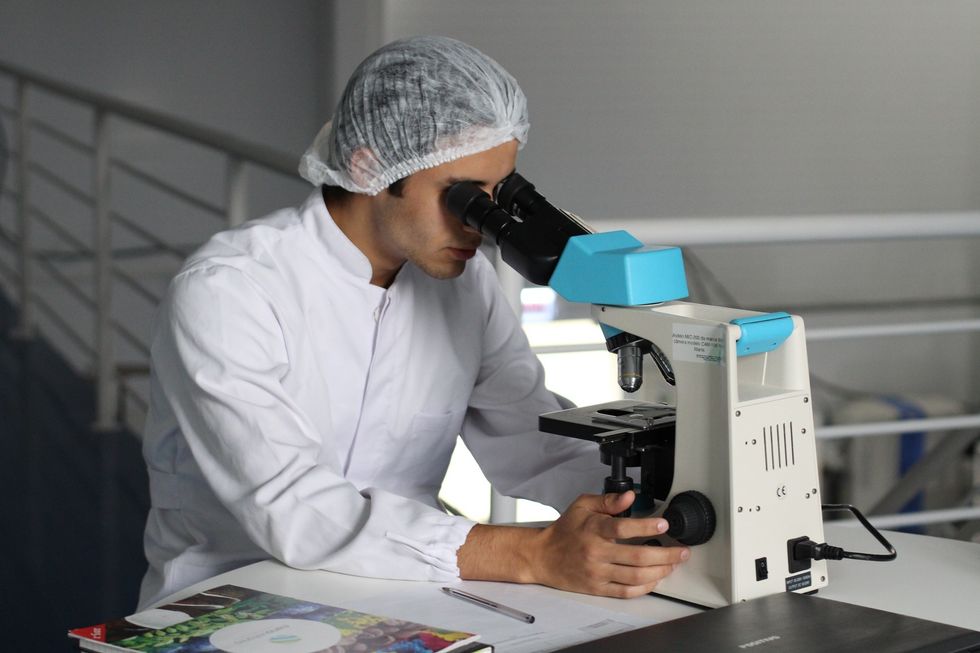Deciding to read more scholarly articles both for individual research as well as for my major specific classes has been something that I have truly enjoyed getting to do this semester. I love the new scientific findings that I can uncover and learn about, in specific, there is one news article that I chose which discusses the scientific finding that Parkinson's disease can be attributed to genetic factors that allow for the complex pathogenesis of Parkinson's disease.
This article was published in 2016 in the Journal of Neuroscience and is called, "Genetics in Parkinson disease: Mendelian versus non-Mendelian inheritance" by Dena Hernandez, Xylena Reed, and Andrew Singleton. The scientific finding discussed in this news article also discusses mutations that produce rare, monogenic forms of the genes can be linked to singular genes such as SNCA, Parkin, DJ-1, PINK 1, LRRK2, and VPS35. With the Mendelian forms of Parkinson's disease more has been learned regarding the pathophysiology for the common form of the disease, however, any concrete treatments have yet to be developed. Even with the new alleles being known for being a high risk the science or understanding behind it remains unknown still and is being studied.
This finding is related to material that we have discussed in NSCS 200 since in Unit II we discussed the major sites and types of pathology in the nervous system regarding Parkinson's disease. In this, we said the major sites included the Striatum, consisting of the putamen and caudate nucleus, the dopamine pathway, and the Substantia Nigra. We talked about how Parkinson's occurs when the dopamine-producing neurons found in the Substantia nigra die because of protein aggregation and because of this there is less dopamine going into the striatum. We also discussed the different inherited and environmental causes of Parkinson's disease. Some environmental causes include head injuries, such as traumatic brain injury, exposure to pesticides and herbicides, or other solvents such as TCE, which can easily be found in contaminated groundwater.
In addition, exposure to certain metals could also have an effect and be a cause. Parkinson's can also be passed down by mutations in specific genes: LRRK2, PARK7, PINK1, PRKN, or the SNCA gene. These mutations in these specific genes are also those that are discussed in this scientific article going more into depth about the effects that these mutations can have, what information we know about their causes, and what still needs to be looked into.
The article's main strengths are that it goes through the different forms of Parkinson's disease as well as the different genes and allele mutations that were studied and connections were found. Such as Monogenic forms of Parkinson's disease, autosomal dominant Parkinson's disease, and Autosomal Recessive Parkinsonism. Another strength of the article is that it takes into account and discusses the genetic risk such as the mixture of effects from genetic, environmental, and lifestyle factors onto Parkinson's disease. The authors also understand that while their findings are important and have led to new discoveries, that Parkinson's disease is very complex, and more findings just lead to more questions.
These new questions are what they discuss in the section titled "The Future," where they discuss what has been found and what still needs to be asked and discovered. I think that the finding is very important because Parkinson's disease is idiopathic and any research that allows for more information to be found can lead to a better understanding of the disease itself as well as leading to the creation of concrete treatment methods that could go on and impact the lives of so many people around the world. I believe that the only limitations in this goes off of what was said in why this finding is important that because Parkinson's disease is so complex there is only a certain extent to which each research experiment can go into and uncover while there is an unknown amount of findings left to be discovered and since there is no concrete end to the question, just more to be asked, that could be considered as a limitation to this article and its findings.



















